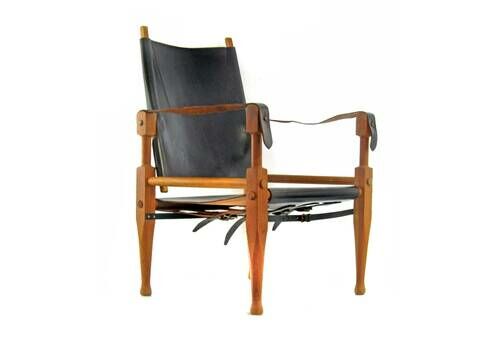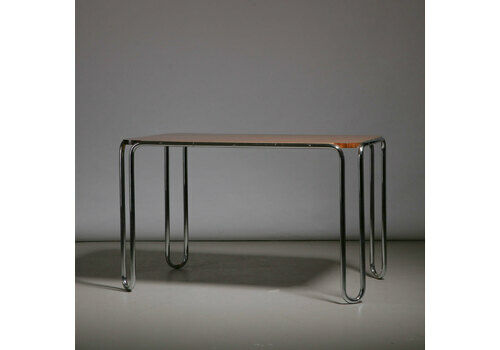Bauhaus Furniture
Buy and sell unique bauhaus furniture from iconic designers.
Filter By
Categories
Price
Sale
Delivery
Dimensions (cm)
Professional details
Sellers
Sort by:

Give the gift of choice. A Vinterior gift card is the perfect gift for those who like to choose for themselves.
Buy an e-gift card
Sale

Sale

Sale

Sale

Choose a Wishlist
You can add this item to an existing wishlist or create a new wishlist
Create Wishlist
Give your wishlist a memorable name such as "remarkable sideboards"
Discover more
Log in or register to continue
Save this search
We will send you updates when new items become available that match your search.
These will be sent by email once a day and you can opt out at any time.
{"art":"art","sculptures":"art/sculptures","free-standing":"art/sculptures/free-standing","animal-sculptures":"art/sculptures/free-standing/animal-sculptures","busts":"art/sculptures/free-standing/busts","statues":"art/sculptures/free-standing/statues","wall-sculptures":"art/sculptures/wall-sculptures","wall-art":"art/wall-art","fine-art-prints":"art/wall-art/fine-art-prints","drawings-and-engravings":"art/wall-art/fine-art-prints/drawings-and-engravings","lithographs":"art/wall-art/fine-art-prints/lithographs","maps":"art/wall-art/fine-art-prints/maps","prints":"art/wall-art/fine-art-prints/prints","other-wall-decor":"art/wall-art/other-wall-decor","paintings":"art/wall-art/paintings","photography":"art/wall-art/photography","posters":"art/wall-art/posters","advertisement-posters":"art/wall-art/posters/advertisement-posters","educational-charts":"art/wall-art/posters/educational-charts","film-posters":"art/wall-art/posters/film-posters","music-posters":"art/wall-art/posters/music-posters","other-posters":"art/wall-art/posters/other-posters","propaganda-posters":"art/wall-art/posters/propaganda-posters","tapestries":"art/wall-art/tapestries","furniture":"furniture","beds":"furniture/beds","bed-frames":"furniture/beds/bed-frames","headboards":"furniture/beds/headboards","seating":"furniture/seating","armchairs":"furniture/seating/armchairs","benches":"furniture/seating/benches","monks-bench":"furniture/seating/benches/monks-bench","chaises-longues":"furniture/seating/chaises-longues","cocktail-chairs":"furniture/seating/cocktail-chairs","dining-chairs":"furniture/seating/dining-chairs","hall-chairs":"furniture/seating/hall-chairs","lounge-chairs":"furniture/seating/lounge-chairs","occasional-chairs":"furniture/seating/occasional-chairs","office-chairs":"furniture/seating/office-chairs","ottomans":"furniture/seating/ottomans","rocking-chairs":"furniture/seating/rocking-chairs","sofas":"furniture/seating/sofas","corner-sofas":"furniture/seating/sofas/corner-sofas","stools":"furniture/seating/stools","bar-stools":"furniture/seating/stools/bar-stools","foot-stools":"furniture/seating/stools/foot-stools","side-table-stools":"furniture/seating/stools/side-table-stools","storage":"furniture/storage","bookshelves":"furniture/storage/bookshelves","breakfront-bookcase":"furniture/storage/bookshelves/breakfront-bookcase","bureau-bookcase":"furniture/storage/bookshelves/bureau-bookcase","corner-bookcase":"furniture/storage/bookshelves/corner-bookcase","open-bookcase":"furniture/storage/bookshelves/open-bookcase","pigeon-holes":"furniture/storage/bookshelves/pigeon-holes","revolving-bookcase":"furniture/storage/bookshelves/revolving-bookcase","stacking-bookcase":"furniture/storage/bookshelves/stacking-bookcase","cabinets":"furniture/storage/cabinets","apothecary-cabinet":"furniture/storage/cabinets/apothecary-cabinet","cocktail-cabinet":"furniture/storage/cabinets/cocktail-cabinet","corner-cabinet":"furniture/storage/cabinets/corner-cabinet","display-cabinet":"furniture/storage/cabinets/display-cabinet","filing-cabinet":"furniture/storage/cabinets/filing-cabinet","haberdashery-cabinet":"furniture/storage/cabinets/haberdashery-cabinet","library-cabinet":"furniture/storage/cabinets/library-cabinet","medical-cabinet":"furniture/storage/cabinets/medical-cabinet","printers-cabinet":"furniture/storage/cabinets/printers-cabinet","record-cabinet":"furniture/storage/cabinets/record-cabinet","tambour-cabinet":"furniture/storage/cabinets/tambour-cabinet","chests-of-drawers":"furniture/storage/chests-of-drawers","commode":"furniture/storage/chests-of-drawers/commode","dresser":"furniture/storage/chests-of-drawers/dresser","tallboy":"furniture/storage/chests-of-drawers/tallboy","coat-racks":"furniture/storage/coat-racks","cupboards":"furniture/storage/cupboards","corner-cupboard":"furniture/storage/cupboards/corner-cupboard","kitchen-cupboard":"furniture/storage/cupboards/kitchen-cupboard","larder-cupboard":"furniture/storage/cupboards/larder-cupboard","linen-cupboard":"furniture/storage/cupboards/linen-cupboard","school-cupboard":"furniture/storage/cupboards/school-cupboard","media-units":"furniture/storage/media-units","secretary-desks":"furniture/storage/secretary-desks","shelves":"furniture/storage/shelves","shelving-system":"furniture/storage/shelves/shelving-system","shelving-unit":"furniture/storage/shelves/shelving-unit","wall-shelves":"furniture/storage/shelves/wall-shelves","wine-rack":"furniture/storage/shelves/wine-rack","sideboards":"furniture/storage/sideboards","trolleys":"furniture/storage/trolleys","trunks":"furniture/storage/trunks","wardrobes":"furniture/storage/wardrobes","armoire":"furniture/storage/wardrobes/armoire","buffets":"furniture/storage/wardrobes/buffets","compactum-wardrobe":"furniture/storage/wardrobes/compactum-wardrobe","linen-press":"furniture/storage/wardrobes/linen-press","lockers":"furniture/storage/wardrobes/lockers","tables":"furniture/tables","bedside-tables":"furniture/tables/bedside-tables","coffee-tables":"furniture/tables/coffee-tables","nesting-tables":"furniture/tables/coffee-tables/nesting-tables","consoles":"furniture/tables/consoles","desks":"furniture/tables/desks","dining-tables":"furniture/tables/dining-tables","dining-tables-and-chairs":"furniture/tables/dining-tables-and-chairs","dressing-tables":"furniture/tables/dressing-tables","drop-leaf-tables":"furniture/tables/drop-leaf-tables","side-tables":"furniture/tables/side-tables","workbenches":"furniture/tables/workbenches","garden-decor":"garden-decor","garden-beds":"garden-decor/garden-beds","garden-mirrors":"garden-decor/garden-mirrors","garden-wall-mirrors":"garden-decor/garden-mirrors/garden-wall-mirrors","garden-pots-and-planters":"garden-decor/garden-pots-and-planters","garden-sculptures":"garden-decor/garden-sculptures","outdoor-cushions":"garden-decor/outdoor-cushions","outdoor-rugs":"garden-decor/outdoor-rugs","garden-furniture":"garden-furniture","garden-seating":"garden-furniture/garden-seating","garden-armchairs":"garden-furniture/garden-seating/garden-armchairs","garden-benches":"garden-furniture/garden-seating/garden-benches","garden-dining-chairs":"garden-furniture/garden-seating/garden-dining-chairs","garden-rocking-chairs":"garden-furniture/garden-seating/garden-rocking-chairs","garden-stools":"garden-furniture/garden-seating/garden-stools","outdoor-sofas":"garden-furniture/garden-seating/outdoor-sofas","garden-storage":"garden-furniture/garden-storage","outdoor-cabinets":"garden-furniture/garden-storage/outdoor-cabinets","garden-tables":"garden-furniture/garden-tables","garden-coffee-tables":"garden-furniture/garden-tables/garden-coffee-tables","garden-side-tables":"garden-furniture/garden-tables/garden-side-tables","outdoor-dining-tables":"garden-furniture/garden-tables/outdoor-dining-tables","garden-lighting":"garden-lighting","outdoor-floor-lamps":"garden-lighting/outdoor-floor-lamps","outdoor-table-lamps":"garden-lighting/outdoor-table-lamps","outdoor-wall-lamps":"garden-lighting/outdoor-wall-lamps","home-decor":"home-decor","accessories":"home-decor/accessories","ashtrays":"home-decor/accessories/ashtrays","baskets":"home-decor/accessories/baskets","books":"home-decor/accessories/books","boxes":"home-decor/accessories/boxes","candle-holders":"home-decor/accessories/candle-holders","candelabras":"home-decor/accessories/candle-holders/candelabras","candlesticks":"home-decor/accessories/candle-holders/candlesticks","other-candle-holders":"home-decor/accessories/candle-holders/other-candle-holders","wall-candle-holders":"home-decor/accessories/candle-holders/wall-candle-holders","clocks":"home-decor/accessories/clocks","longcase-clock":"home-decor/accessories/clocks/longcase-clock","table-clock":"home-decor/accessories/clocks/table-clock","wall-clock":"home-decor/accessories/clocks/wall-clock","collectibles":"home-decor/accessories/collectibles","columns-and-pedestals":"home-decor/accessories/columns-and-pedestals","desk-accessories":"home-decor/accessories/desk-accessories","other-desk-accessories":"home-decor/accessories/desk-accessories/other-desk-accessories","paperweights":"home-decor/accessories/desk-accessories/paperweights","writing-tools":"home-decor/accessories/desk-accessories/writing-tools","electronics":"home-decor/accessories/electronics","cameras-and-projectors":"home-decor/accessories/electronics/cameras-and-projectors","other-electronics":"home-decor/accessories/electronics/other-electronics","radios-and-audio":"home-decor/accessories/electronics/radios-and-audio","sewing-machines":"home-decor/accessories/electronics/sewing-machines","telephones":"home-decor/accessories/electronics/telephones","fireplace":"home-decor/accessories/fireplace","ladders-and-steps":"home-decor/accessories/ladders-and-steps","magazine-racks":"home-decor/accessories/magazine-racks","mannequins":"home-decor/accessories/mannequins","musical-instruments":"home-decor/accessories/musical-instruments","other-objects":"home-decor/accessories/other-objects","bookends":"home-decor/accessories/other-objects/bookends","figurines":"home-decor/accessories/other-objects/figurines","globes":"home-decor/accessories/other-objects/globes","other-decorative-objects":"home-decor/accessories/other-objects/other-decorative-objects","picture-frames":"home-decor/accessories/picture-frames","pots-and-planters":"home-decor/accessories/pots-and-planters","flowerpots":"home-decor/accessories/pots-and-planters/flowerpots","plant-stands":"home-decor/accessories/pots-and-planters/plant-stands","room-dividers":"home-decor/accessories/room-dividers","scientific-and-measuring-tools":"home-decor/accessories/scientific-and-measuring-tools","taxidermy":"home-decor/accessories/taxidermy","toys":"home-decor/accessories/toys","dolls-and-doll-houses":"home-decor/accessories/toys/dolls-and-doll-houses","other-toys-and-games":"home-decor/accessories/toys/other-toys-and-games","rocking-horses":"home-decor/accessories/toys/rocking-horses","umbrella-stands":"home-decor/accessories/umbrella-stands","vases":"home-decor/accessories/vases","vintage-signs":"home-decor/accessories/vintage-signs","wallpaper":"home-decor/accessories/wallpaper","kitchenware":"home-decor/kitchenware","bowls":"home-decor/kitchenware/bowls","cutlery":"home-decor/kitchenware/cutlery","glassware":"home-decor/kitchenware/glassware","bottles":"home-decor/kitchenware/glassware/bottles","decanters":"home-decor/kitchenware/glassware/decanters","drinking-glasses":"home-decor/kitchenware/glassware/drinking-glasses","ice-buckets":"home-decor/kitchenware/ice-buckets","jugs-jars-and-tins":"home-decor/kitchenware/jugs-jars-and-tins","kitchenelia":"home-decor/kitchenware/kitchenelia","cooking-pots-and-pans":"home-decor/kitchenware/kitchenelia/cooking-pots-and-pans","moulds-and-baking":"home-decor/kitchenware/kitchenelia/moulds-and-baking","other-cooking-utensils":"home-decor/kitchenware/kitchenelia/other-cooking-utensils","plates":"home-decor/kitchenware/plates","serving-dishes":"home-decor/kitchenware/serving-dishes","tea-and-coffee":"home-decor/kitchenware/tea-and-coffee","trays":"home-decor/kitchenware/trays","mirrors":"home-decor/mirrors","floor-mirrors":"home-decor/mirrors/floor-mirrors","hand-mirrors":"home-decor/mirrors/hand-mirrors","table-mirrors":"home-decor/mirrors/table-mirrors","wall-mirrors":"home-decor/mirrors/wall-mirrors","home-fixtures":"home-fixtures","doors-and-accessories":"home-fixtures/doors-and-accessories","door-accessories":"home-fixtures/doors-and-accessories/door-accessories","doors":"home-fixtures/doors-and-accessories/doors","fireplaces-surrounds-and-inserts":"home-fixtures/fireplaces-surrounds-and-inserts","accessories-and-tools":"home-fixtures/fireplaces-surrounds-and-inserts/accessories-and-tools","fireplaces":"home-fixtures/fireplaces-surrounds-and-inserts/fireplaces","flooring-and-tiles":"home-fixtures/flooring-and-tiles","windows":"home-fixtures/windows","lighting":"lighting","ceiling-lights":"lighting/ceiling-lights","chandeliers":"lighting/ceiling-lights/chandeliers","pendants":"lighting/ceiling-lights/pendants","floor-lamps":"lighting/floor-lamps","lamp-shades":"lighting/lamp-shades","table-lamps":"lighting/table-lamps","wall-lights":"lighting/wall-lights","textiles":"textiles","cushions":"textiles/cushions","other-textiles":"textiles/other-textiles","rugs":"textiles/rugs","caucasian-rugs":"textiles/rugs/caucasian-rugs","contemporary-rugs":"textiles/rugs/contemporary-rugs","hides-and-skins":"textiles/rugs/hides-and-skins","moroccan-rugs":"textiles/rugs/moroccan-rugs","oriental-rugs":"textiles/rugs/oriental-rugs","persian-rugs":"textiles/rugs/persian-rugs","scandinavian-rugs":"textiles/rugs/scandinavian-rugs","traditional-rugs":"textiles/rugs/traditional-rugs","turkish-rugs":"textiles/rugs/turkish-rugs","throws":"textiles/throws"}
{"art":["location/london","material/glass","period/1700s","period/1800s","period/1900s","period/1930s","period/1940s","period/1950s","period/1960s","style/african","style/antique","style/georgian"],"art/sculptures":["colour/blue","colour/gold","colour/grey","colour/silver","colour/white","designer/curtis-jere","designer/lisa-larson","location/london","material/acrylic","material/bronze","material/cast-iron","material/ceramic","material/copper","material/crystal","material/glass","material/iron","material/marble","material/murano-glass","material/oak","material/other-metal","material/other-wood","material/porcelain","material/pottery","material/steel","material/stone","material/tin","material/travertine","period/1960s","style/african","style/art-deco","style/art-nouveau","style/chinese-antiques","style/french-antiques","style/gothic","style/italian-antiques","style/mid-century-modern","style/modernist","style/victorian"],"art/sculptures/free-standing/animal-sculptures":["material/bronze","material/other-metal","material/other-wood"],"art/sculptures/free-standing/busts":["material/bronze","material/ceramic","material/marble","material/stone"],"art/sculptures/free-standing/statues":["material/bronze","material/ceramic","material/marble","material/other-metal","material/other-wood","material/porcelain","material/stone","style/african","style/french-antiques","style/italian-antiques"],"art/wall-art":["colour/blue","colour/gold","colour/grey","colour/white","colour/yellow","location/london","material/bronze","material/canvas","material/ceramic","material/copper","material/glass","material/iron","material/other-metal","material/other-wood","material/porcelain","material/steel","period/1960s","period/1970s","style/african","style/art-deco","style/art-nouveau","style/chinese-antiques","style/contemporary","style/french-antiques","style/gothic","style/industrial","style/mid-century-modern","style/minimalist","style/oriental","style/rustic","style/upcycled","style/victorian"],"art/wall-art/fine-art-prints/prints":["material/other-wood","material/watercolour","period/1920s","period/1930s","period/1940s","period/1960s","style/contemporary","style/french-antiques","style/oriental","style/victorian"],"art/wall-art/other-wall-decor":["location/london","style/antique"],"art/wall-art/paintings":["colour/blue","colour/cream","colour/gold","colour/green","colour/pink","colour/red","location/london","material/acrylic","material/canvas","material/glass","material/oak","material/oil-on-canvas","material/oil-paint","material/silk","material/watercolour","period/1600s","period/1900s","period/1950s","period/1960s","period/1970s","style/african","style/antique","style/art-deco","style/chinese-antiques","style/contemporary","style/dutch-antiques","style/edwardian","style/french-antiques","style/georgian","style/italian-antiques","style/mid-century-modern","style/oriental","style/swedish-antiques","style/victorian"],"art/wall-art/photography":["colour/black","colour/white","designer/slim-aarons","location/london","period/1920s","period/1930s","period/1950s","period/1990s","style/antique"],"art/wall-art/posters":["colour/orange","designer/andy-warhol","designer/henri-matisse","location/london","period/1900s","period/1920s","period/1930s","period/1940s","period/1950s","period/1960s","period/1970s","period/1980s","period/1990s","period/2000s","style/art-deco","style/contemporary","style/french-antiques","style/mid-century-modern","style/minimalist","style/modernist","style/retro"],"art/wall-art/posters/film-posters":["period/1920s","period/1940s","period/1950s","period/1960s","period/2000s","style/art-deco","style/minimalist"],"art/wall-art/tapestries":["colour/brown","location/london","material/wool","style/french-antiques"],"furniture/beds/bed-frames":["material/iron","material/mahogany","material/oak","material/rattan","material/teak","material/walnut","style/art-deco","style/french-antiques","style/italian-antiques","style/shabby-chic","style/victorian"],"furniture/beds":["colour/black","colour/cream","colour/white","material/bamboo","material/brass","material/iron","material/mahogany","material/oak","material/other-metal","material/other-wood","material/pine","material/teak","material/walnut","period/1970s","style/art-deco","style/art-nouveau","style/boho","style/french-antiques","style/italian-antiques","style/mid-century-modern","style/scandinavian-modern","style/shabby-chic","style/upcycled","style/victorian"],"furniture/beds/headboards":["material/bamboo","style/boho"],"furniture":["brand/artek","brand/avalon","brand/b\u0026b-italia","brand/beaver-and-tapley","brand/beithcraft","brand/bevan-funnell","brand/ducal","brand/dyrlund","brand/ercol","brand/fredericia","brand/frem-rojle","brand/fritz-hansen","brand/fyne-ladye","brand/gordon-russell","brand/g-plan","brand/greaves-\u0026-thomas","brand/habitat","brand/heal's","brand/hille","brand/ikea","brand/jentique","brand/kartell","brand/laura-ashley","brand/lebus","brand/liberty","brand/ligne-roset","brand/maple-\u0026-co","brand/mcintosh","brand/meredew","brand/moroso","brand/morris-of-glasgow","brand/nathan","brand/parker-knoll","brand/roche-bobois","brand/schreiber","brand/skovby","brand/stag","brand/string","brand/thonet","brand/ton","brand/vitra","brand/younger","designer/alfred-hendrickx","designer/arne-jacobsen","designer/arne-vodder","designer/betty-joel","designer/cesare-lacca","designer/charles-eames","designer/charles-hollis-jones","designer/charles-rennie-mackintosh","designer/charlotte-perriand","designer/chippendale","designer/eileen-gray","designer/enzo-mari","designer/ernest-race","designer/finn-juhl","designer/frantisek-jirak","designer/gianfranco-frattini","designer/guy-lefevre","designer/hans-j-wegner","designer/hans-olsen","designer/illum-wikkelso","designer/ilmari-tapiovaara","designer/johannes-andersen","designer/josef-hoffmann","designer/kai-kristiansen","designer/le-corbusier","designer/mario-bellini","designer/martin-visser","designer/milo-baughman","designer/nils-jonsson","designer/osvaldo-borsani","designer/paul-evans","designer/peter-hvidt","designer/pierre-paulin","designer/poul-cadovius","designer/poul-hundevad","designer/renato-zevi","designer/rodney-kinsman","designer/severin-hansen","designer/tim-bates","designer/vico-magistretti","location/bath","location/birmingham","location/bournemouth","location/brighton","location/bristol","location/bury-st-edmunds","location/cambridge","location/cardiff","location/carlisle","location/cheshire","location/colchester","location/cornwall","location/derby","location/doncaster","location/dorset","location/durham","location/glasgow","location/harrogate","location/hastings","location/hove","location/ipswich","location/leeds","location/leicester","location/london","location/milton-keynes","location/newcastle","location/newport","location/northampton","location/norwich","location/nottingham","location/plymouth","location/portsmouth","location/preston","location/reading","location/sheffield","location/shrewsbury","location/shropshire","location/stockport","location/surrey","location/swansea","location/swindon","location/walsall","location/walton-on-thames","location/warrington","location/york","material/cane","material/iron","material/mahogany","material/maple","material/oak","material/pine","material/rattan","material/reclaimed-wood","material/teak","material/walnut","period/1800s","period/1920s","period/1930s","period/1940s","period/1950s","period/1960s","period/1970s","period/1980s","style/african","style/art-deco","style/art-nouveau","style/bauhaus","style/boho","style/campaign","style/chinese-antiques","style/contemporary","style/danish-antiques","style/edwardian","style/french-antiques","style/georgian","style/gothic","style/hollywood-regency","style/industrial","style/italian-antiques","style/mid-century-modern","style/minimalist","style/modernist","style/neoclassical","style/oriental","style/postmodern","style/retro","style/rustic","style/scandinavian-modern","style/shabby-chic","style/traditional","style/upcycled","style/victorian"],"furniture/seating/armchairs":["brand/cassina","brand/ercol","brand/g-plan","brand/minotti","brand/parker-knoll","brand/thonet","colour/beige","colour/black","colour/blue","colour/brown","colour/cream","colour/grey","colour/orange","colour/purple","colour/white","colour/yellow","designer/hans-j-wegner","material/cane","material/leather","material/linen","material/plastic","material/rattan","material/sheepskin","material/teak","material/velvet","material/wool","period/1800s","period/1940s","period/1950s","period/1960s","style/antique","style/art-deco","style/arts-and-crafts","style/bauhaus","style/boho","style/british-antiques","style/danish-antiques","style/edwardian","style/french-antiques","style/georgian","style/gothic","style/industrial","style/italian-antiques","style/mid-century-modern","style/minimalist","style/modernist","style/retro","style/rustic","style/scandinavian-modern","style/shabby-chic","style/traditional","style/upcycled","style/victorian"],"furniture/seating/benches":["colour/blue","material/elm","material/leather","material/oak","material/pine","material/stone","material/teak","material/velvet","style/chinese-antiques","style/french-antiques","style/italian-antiques","style/mid-century-modern","style/rustic","style/shabby-chic","style/upcycled","style/victorian"],"furniture/seating":["brand/artek","brand/b\u0026b-italia","brand/cassina","brand/cintique","brand/de-sede","brand/ercol","brand/g-plan","brand/ikea","brand/parker-knoll","brand/rolf-benz","brand/thonet","brand/tolix","brand/vitra","brand/walter-knoll","brand/zanotta","colour/black","colour/cream","colour/green","colour/orange","colour/pink","colour/red","colour/white","designer/alvar-aalto","designer/arne-jacobsen","designer/arne-norell","designer/borge-mogensen","designer/bruno-mathsson","designer/charlotte-perriand","designer/eero-aarnio","designer/finn-juhl","designer/friso-kramer","designer/gerd-lange","designer/hans-brattrud","designer/hans-j-wegner","designer/harry-bertoia","designer/herman-miller","designer/ico-parisi","designer/jindrich-halabala","designer/kai-kristiansen","designer/marcel-breuer","designer/mario-bellini","designer/niels-moller","designer/pierre-jeanneret","designer/pierre-paulin","designer/robin-day","designer/theo-ruth","designer/verner-panton","designer/verner-paton","designer/vico-magistretti","designer/yrjo-kukkapuro","location/london","material/aluminium","material/bamboo","material/beech","material/cane","material/elm","material/leather","material/oak","material/other-metal","material/other-wood","material/pine","material/plastic","material/rattan","material/rosewood","material/sheepskin","material/steel","material/teak","material/velvet","material/vinyl","material/walnut","period/1600s","period/1900s","period/1920s","period/1930s","period/1940s","period/1950s","period/1960s","period/1970s","period/1980s","period/1990s","style/art-deco","style/art-nouveau","style/bauhaus","style/boho","style/campaign","style/chinese-antiques","style/danish-antiques","style/edwardian","style/french-antiques","style/gothic","style/hollywood-regency","style/industrial","style/italian-antiques","style/mid-century-modern","style/minimalist","style/neoclassical","style/retro","style/rustic","style/scandinavian-modern","style/shabby-chic","style/swedish-antiques","style/upcycled","style/victorian"],"furniture/seating/chaises-longues":["material/leather","style/victorian"],"furniture/seating/dining-chairs":["brand/ercol","brand/g-plan","brand/tolix","brand/vitra","colour/beige","colour/tan","designer/charles-eames","designer/erik-buch","designer/johannes-andersen","designer/niels-koefoed","material/ash","material/bamboo","material/beech","material/bentwood","material/cane","material/leather","material/mahogany","material/oak","material/pine","material/plastic","material/rattan","material/rosewood","material/velvet","material/walnut","period/1700s","period/1900s","period/1920s","period/1930s","period/1940s","period/1950s","period/1960s","period/1970s","style/antique","style/art-deco","style/art-nouveau","style/bauhaus","style/boho","style/contemporary","style/danish-antiques","style/edwardian","style/french-antiques","style/georgian","style/gothic","style/industrial","style/italian-antiques","style/mid-century-modern","style/minimalist","style/modernist","style/retro","style/scandinavian-modern","style/shabby-chic","style/upcycled","style/victorian"],"furniture/seating/lounge-chairs":["colour/black","colour/blue","colour/green","colour/grey","colour/orange","colour/tan","colour/white","designer/charles-eames","designer/howard-keith","designer/jindrich-halabala","material/plastic","material/teak","style/antique","style/contemporary"],"furniture/seating/occasional-chairs":["colour/green","material/cane","material/leather","material/rattan","style/mid-century-modern","style/victorian"],"furniture/seating/office-chairs":["brand/vitra","colour/blue","colour/brown","colour/green","colour/red","colour/white","material/oak","material/steel","period/1960s","period/1970s","style/industrial","style/mid-century-modern","style/upcycled","style/victorian"],"furniture/seating/ottomans":["colour/beige","colour/grey","colour/white","material/leather","style/art-deco","style/scandinavian-modern"],"furniture/seating/rocking-chairs":["brand/ercol","brand/thonet","colour/green","colour/grey","material/bamboo","material/bentwood","material/leather","material/oak","material/teak","style/mid-century-modern","style/scandinavian-modern","style/upcycled","style/victorian"],"furniture/seating/sofas":["brand/b\u0026b-italia","brand/cassina","brand/ercol","brand/george-smith","brand/g-plan","brand/knoll","brand/ligne-roset","colour/beige","colour/black","colour/blue","colour/brown","colour/cream","colour/green","colour/grey","colour/multicolor","colour/orange","colour/pink","colour/purple","colour/red","colour/white","designer/hans-j-wegner","material/bamboo","material/leather","material/linen","material/rattan","material/rosewood","material/teak","material/velvet","material/wool","period/1920s","period/1940s","period/1950s","period/1960s","period/1970s","period/1980s","period/1990s","style/antique","style/art-deco","style/bauhaus","style/boho","style/danish-antiques","style/edwardian","style/french-antiques","style/georgian","style/industrial","style/italian-antiques","style/mid-century-modern","style/modernist","style/postmodern","style/retro","style/scandinavian-modern","style/shabby-chic","style/traditional","style/upcycled"],"furniture/seating/stools/bar-stools":["colour/black","colour/brown","colour/red","material/iron","material/other-wood","material/rattan","material/steel","shape/round","shape/square","style/boho","style/modernist","style/retro","style/scandinavian-modern"],"furniture/seating/stools":["brand/g-plan","colour/white","material/bamboo","material/bentwood","material/elm","material/iron","material/leather","material/oak","material/pine","material/plastic","material/rattan","material/steel","material/teak","material/velvet","material/walnut","period/1700s","shape/round","style/african","style/art-deco","style/boho","style/chinese-antiques","style/contemporary","style/edwardian","style/french-antiques","style/industrial","style/mid-century-modern","style/retro","style/rustic","style/scandinavian-modern","style/shabby-chic","style/upcycled","style/victorian"],"furniture/seating/stools/foot-stools":["colour/black","colour/yellow","material/leather","material/oak","material/other-wood","material/teak","style/boho","style/mid-century-modern","style/retro","style/scandinavian-modern","style/victorian"],"furniture/storage/bookshelves":["brand/globe-wernicke","brand/g-plan","colour/black","material/glass","material/mahogany","material/oak","material/pine","material/reclaimed-wood","material/teak","material/walnut","style/art-deco","style/contemporary","style/edwardian","style/french-antiques","style/georgian","style/gothic","style/industrial","style/mid-century-modern","style/retro","style/rustic","style/scandinavian-modern","style/shabby-chic","style/upcycled","style/victorian"],"furniture/storage/bookshelves/bureau-bookcase":["material/oak","style/georgian"],"furniture/storage/bookshelves/open-bookcase":["material/mahogany","material/oak","material/other-wood","material/pine","material/teak","material/walnut"],"furniture/storage/cabinets":["brand/ercol","brand/g-plan","brand/nathan","colour/black","colour/green","designer/jiri-jiroutek","door-type/sliding-doors","material/bamboo","material/beech","material/cherry-wood","material/elm","material/glass","material/mahogany","material/oak","material/other-metal","material/plastic","material/rosewood","material/steel","material/teak","material/walnut","period/1930s","period/1950s","period/1970s","style/art-deco","style/chinese-antiques","style/dutch-antiques","style/edwardian","style/french-antiques","style/georgian","style/industrial","style/italian-antiques","style/mid-century-modern","style/rustic","style/shabby-chic","style/upcycled","style/victorian"],"furniture/storage/cabinets/cocktail-cabinet":["material/walnut","period/1950s","style/art-deco","style/mid-century-modern"],"furniture/storage/cabinets/corner-cabinet":["material/mahogany","material/oak","material/other-wood"],"furniture/storage/cabinets/display-cabinet":["colour/black","colour/blue","colour/white","material/mahogany","material/oak","material/other-wood","material/pine","material/teak","material/walnut","period/1930s","period/1950s","period/1960s","style/chinese-antiques","style/french-antiques","style/mid-century-modern","style/rustic","style/shabby-chic"],"furniture/storage/cabinets/filing-cabinet":["material/mahogany","material/oak","material/other-metal","material/other-wood","material/pine","material/steel","style/industrial"],"furniture/storage/cabinets/record-cabinet":["material/teak","period/1970s"],"furniture/storage/chests-of-drawers":["brand/ercol","brand/g-plan","brand/stag","colour/blue","colour/brown","colour/cream","colour/green","colour/grey","colour/pink","colour/red","colour/white","material/bamboo","material/beech","material/cherry-wood","material/glass","material/mahogany","material/maple","material/marble","material/oak","material/pine","material/teak","material/walnut","period/1920s","period/1930s","period/1970s","style/art-deco","style/boho","style/campaign","style/chinese-antiques","style/danish-antiques","style/edwardian","style/french-antiques","style/georgian","style/hollywood-regency","style/industrial","style/italian-antiques","style/mid-century-modern","style/minimalist","style/retro","style/rustic","style/scandinavian-modern","style/shabby-chic","style/upcycled","style/victorian"],"furniture/storage/chests-of-drawers/commode":["style/french-antiques"],"furniture/storage/chests-of-drawers/dresser":["brand/ercol","colour/black","colour/blue","colour/green","colour/pink","colour/white","material/mahogany","material/other-wood","material/teak","material/walnut","period/1800s","period/1930s","period/1950s","style/art-deco","style/campaign","style/georgian","style/italian-antiques","style/rustic","style/scandinavian-modern"],"furniture/storage/chests-of-drawers/tallboy":["brand/g-plan","brand/stag","colour/blue","material/mahogany","material/oak","material/other-wood","material/pine","material/walnut","style/french-antiques","style/mid-century-modern","style/scandinavian-modern","style/upcycled"],"furniture/storage/coat-racks":["colour/black","colour/grey","colour/red","material/bamboo","material/oak","material/other-wood","style/industrial","style/victorian"],"furniture/storage":["colour/grey","colour/white","location/london","material/bamboo","material/enamel","material/rattan","material/tin","style/boho","style/industrial","style/mid-century-modern","style/scandinavian-modern","style/shabby-chic","style/victorian"],"furniture/storage/cupboards":["colour/black","colour/brown","colour/red","colour/white","material/mahogany","material/oak","material/pine","material/teak","material/walnut","style/art-deco","style/french-antiques","style/georgian","style/industrial","style/oriental","style/rustic","style/shabby-chic","style/upcycled","style/victorian"],"furniture/storage/cupboards/corner-cupboard":["material/oak","material/pine","style/georgian"],"furniture/storage/cupboards/kitchen-cupboard":["period/1950s"],"furniture/storage/cupboards/larder-cupboard":["material/pine"],"furniture/storage/media-units":["material/teak","period/1970s","style/mid-century-modern","style/retro"],"furniture/storage/secretary-desks":["style/art-deco","style/upcycled"],"furniture/storage/shelves":["brand/tomado","colour/grey","designer/kai-kristiansen","material/aluminium","material/bamboo","material/beech","material/copper","material/glass","material/iron","material/mahogany","material/oak","material/pine","material/rattan","material/reclaimed-wood","material/steel","material/teak","material/walnut","style/boho","style/french-antiques","style/industrial","style/mid-century-modern","style/minimalist","style/retro","style/rustic","style/scandinavian-modern","style/shabby-chic","style/upcycled","style/victorian"],"furniture/storage/shelves/shelving-unit":["colour/black","colour/white","material/bamboo","material/mahogany","material/other-wood","material/rattan","material/walnut","style/boho","style/industrial","style/scandinavian-modern"],"furniture/storage/shelves/wall-shelves":["material/other-metal","material/other-wood","style/contemporary","style/industrial","style/scandinavian-modern"],"furniture/storage/sideboards":["brand/avalon","brand/beautility","brand/dalescraft","brand/ercol","brand/g-plan","brand/heals","brand/mcintosh","brand/meredew","brand/nathan","brand/stag","brand/younger","colour/beige","colour/black","colour/brown","colour/cream","colour/green","colour/grey","colour/red","colour/yellow","door-type/sliding-doors","material/ash","material/cherry-wood","material/elm","material/formica","material/glass","material/mahogany","material/maple","material/marble","material/oak","material/pine","material/reclaimed-wood","material/rosewood","material/teak","material/walnut","period/1920s","period/1930s","period/1940s","period/1950s","period/1960s","period/1970s","style/antique","style/art-deco","style/art-nouveau","style/boho","style/chinese-antiques","style/contemporary","style/danish-antiques","style/edwardian","style/french-antiques","style/georgian","style/gothic","style/industrial","style/italian-antiques","style/mid-century-modern","style/retro","style/rustic","style/scandinavian-modern","style/shabby-chic","style/upcycled","style/victorian"],"furniture/storage/trolleys":["colour/black","colour/gold","colour/white","material/bamboo","material/brass","material/glass","material/rattan","style/art-deco","style/industrial","style/mid-century-modern"],"furniture/storage/trunks":["brand/louis-vuitton","colour/beige","colour/blue","colour/grey","material/leather","material/oak","material/other-metal","material/pine","style/chinese-antiques","style/oriental","style/upcycled","style/victorian"],"furniture/storage/wardrobes/armoire":["colour/black"],"furniture/storage/wardrobes":["brand/g-plan","colour/black","colour/blue","colour/brown","colour/white","material/cherry-wood","material/mahogany","material/oak","material/pine","material/steel","material/teak","material/walnut","period/1930s","period/1950s","period/1960s","period/1970s","style/art-deco","style/chinese-antiques","style/french-antiques","style/georgian","style/industrial","style/italian-antiques","style/mid-century-modern","style/oriental","style/retro","style/shabby-chic","style/upcycled","style/victorian"],"furniture/storage/wardrobes/buffets":["material/oak","style/french-antiques"],"furniture/tables/bedside-tables":["brand/stag","colour/black","colour/blue","colour/brown","colour/green","colour/grey","colour/white","material/bamboo","material/beech","material/cherry-wood","material/glass","material/mahogany","material/marble","material/oak","material/pine","material/teak","material/walnut","shape/round","style/art-deco","style/boho","style/contemporary","style/edwardian","style/french-antiques","style/georgian","style/industrial","style/italian-antiques","style/mid-century-modern","style/modernist","style/oriental","style/retro","style/rustic","style/scandinavian-modern","style/shabby-chic","style/upcycled","style/victorian"],"furniture/tables":["brand/b\u0026b-italia","brand/dyrlund","brand/ercol","brand/fritz-hansen","brand/g-plan","brand/ikea","brand/knoll","brand/mcintosh","brand/nathan","brand/skovby","brand/stag","brand/thonet","brand/tolix","brand/vitra","colour/grey","colour/orange","colour/tan","designer/angelo-mangiarotti","designer/charles-\u0026-ray-eames","designer/charlotte-perriand","designer/hans-j-wegner","designer/ico-parisi","designer/johannes-andersen","designer/marcel-breuer","designer/percival-lafer","location/london","material/aluminium","material/ash","material/bamboo","material/beech","material/cane","material/cast-iron","material/ceramic","material/cherry-wood","material/concrete","material/copper","material/crystal","material/elm","material/formica","material/glass","material/granite","material/iron","material/leather","material/mahogany","material/maple","material/marble","material/oak","material/other-metal","material/pine","material/plastic","material/rattan","material/rosewood","material/stone","material/travertine","material/vinyl","material/walnut","material/zinc","period/1600s","period/1700s","period/1800s","period/1940s","period/1960s","period/1970s","shape/round","style/african","style/art-deco","style/art-nouveau","style/campaign","style/chinese-antiques","style/danish-antiques","style/dutch-antiques","style/edwardian","style/french-antiques","style/georgian","style/gothic","style/hollywood-regency","style/industrial","style/italian-antiques","style/mid-century-modern","style/rustic","style/scandinavian-modern","style/swedish-antiques","style/victorian"],"furniture/tables/coffee-tables":["brand/b\u0026b-italia","brand/ercol","brand/g-plan","brand/knoll","brand/maison-jansen","brand/nathan","brand/pierre-vandel","brand/roche-bobois","brand/stag","colour/green","colour/red","colour/white","designer/hans-j-wegner","designer/johannes-andersen","designer/willy-rizzo","material/aluminium","material/bamboo","material/beech","material/brass","material/bronze","material/ceramic","material/cherry-wood","material/crystal","material/elm","material/formica","material/glass","material/iron","material/mahogany","material/marble","material/oak","material/pine","material/plastic","material/rattan","material/reclaimed-wood","material/rosewood","material/stone","material/teak","material/travertine","material/walnut","period/1930s","period/1950s","period/1960s","shape/rectangle","shape/triangle","style/african","style/antique","style/art-deco","style/bauhaus","style/boho","style/chinese-antiques","style/danish-antiques","style/edwardian","style/french-antiques","style/georgian","style/hollywood-regency","style/industrial","style/mid-century-modern","style/minimalist","style/modernist","style/oriental","style/retro","style/rustic","style/scandinavian-modern","style/shabby-chic","style/upcycled","style/victorian"],"furniture/tables/coffee-tables/nesting-tables":["brand/g-plan","colour/black","colour/white","material/other-metal","style/scandinavian-modern"],"furniture/tables/consoles":["colour/brown","colour/cream","colour/green","colour/grey","material/chrome","material/elm","material/glass","material/iron","material/mahogany","material/marble","material/pine","material/teak","material/walnut","shape/round","shape/square","style/art-deco","style/chinese-antiques","style/edwardian","style/french-antiques","style/georgian","style/industrial","style/italian-antiques","style/mid-century-modern","style/retro","style/rustic","style/scandinavian-modern","style/shabby-chic","style/upcycled","style/victorian"],"furniture/tables/desks":["brand/ercol","brand/g-plan","brand/stag","colour/white","designer/arne-vodder","designer/kai-kristiansen","material/beech","material/cherry-wood","material/formica","material/glass","material/iron","material/leather","material/mahogany","material/oak","material/pine","material/reclaimed-wood","material/rosewood","material/steel","material/teak","material/walnut","period/1800s","period/1930s","period/1940s","period/1950s","period/1960s","period/1970s","shape/square","style/antique","style/art-deco","style/bauhaus","style/edwardian","style/french-antiques","style/georgian","style/gothic","style/industrial","style/italian-antiques","style/mid-century-modern","style/minimalist","style/modernist","style/retro","style/rustic","style/scandinavian-modern","style/shabby-chic","style/upcycled","style/victorian"],"furniture/tables/dining-tables-and-chairs":["brand/ercol","material/glass","material/mahogany","material/marble","material/oak","material/teak","material/walnut","period/1960s","period/1970s","style/boho","style/contemporary","style/italian-antiques","style/mid-century-modern","style/scandinavian-modern","style/upcycled"],"furniture/tables/dining-tables":["brand/ercol","brand/g-plan","brand/knoll","brand/skovby","brand/tolix","colour/beige","colour/black","colour/cream","colour/grey","colour/white","material/beech","material/cherry-wood","material/elm","material/formica","material/glass","material/mahogany","material/marble","material/oak","material/pine","material/reclaimed-wood","material/rosewood","material/travertine","material/walnut","period/1920s","period/1930s","period/1950s","period/1960s","period/1970s","shape/oval","shape/square","style/art-deco","style/edwardian","style/french-antiques","style/georgian","style/hollywood-regency","style/industrial","style/modernist","style/rustic","style/scandinavian-modern","style/shabby-chic","style/swedish-antiques","style/upcycled","style/victorian"],"furniture/tables/dressing-tables":["brand/g-plan","brand/stag","colour/black","colour/white","material/mahogany","material/oak","material/pine","material/teak","material/walnut","period/1920s","period/1930s","period/1940s","period/1950s","period/1960s","period/1970s","style/art-deco","style/art-nouveau","style/boho","style/french-antiques","style/italian-antiques","style/mid-century-modern","style/scandinavian-modern","style/shabby-chic","style/upcycled","style/victorian"],"furniture/tables/drop-leaf-tables":["material/oak"],"furniture/tables/side-tables":["brand/g-plan","colour/beige","material/ash","material/bamboo","material/cast-iron","material/ceramic","material/copper","material/glass","material/leather","material/mahogany","material/marble","material/oak","material/pine","material/rattan","material/rosewood","material/steel","material/teak","material/travertine","material/walnut","period/1970s","shape/rectangle","style/african","style/art-deco","style/art-nouveau","style/chinese-antiques","style/contemporary","style/edwardian","style/french-antiques","style/georgian","style/gothic","style/industrial","style/italian-antiques","style/mid-century-modern","style/minimalist","style/retro","style/scandinavian-modern","style/upcycled","style/victorian"],"garden-decor/garden-sculptures":["material/stone"],"garden-decor":["style/rustic"],"garden-furniture/garden-seating":["material/cast-iron"],"garden-furniture":["material/cast-iron","style/boho","style/mid-century-modern","style/victorian"],"home-decor/accessories/ashtrays":["material/ceramic","material/crystal","material/glass","material/marble"],"home-decor/accessories/baskets":["material/copper","material/leather","material/rattan","material/silver","style/african","style/boho","style/french-antiques","style/rustic"],"home-decor/accessories/boxes":["material/ceramic","material/copper","material/enamel","material/glass","material/iron","material/leather","material/mahogany","material/marble","material/oak","material/teak","material/tin","material/walnut","style/antique","style/art-deco","style/chinese-antiques","style/retro","style/victorian"],"home-decor/accessories":["brand/karlsruher-majolika","brand/whitefriars","location/london","material/copper","period/1960s","style/antique","style/shabby-chic","style/victorian"],"home-decor/accessories/candle-holders":["colour/gold","colour/green","colour/grey","material/bronze","material/cast-iron","material/ceramic","material/copper","material/crystal","material/glass","material/iron","material/oak","material/pewter","material/porcelain","material/pottery","material/silver","material/stoneware","style/african","style/art-deco","style/boho","style/contemporary","style/french-antiques","style/georgian","style/gothic","style/mid-century-modern","style/shabby-chic","style/victorian"],"home-decor/accessories/clocks":["colour/black","colour/green","colour/red","colour/silver","colour/white","material/bakelite","material/bronze","material/ceramic","material/copper","material/iron","material/marble","material/oak","material/pine","period/1700s","period/1800s","period/1930s","period/1940s","period/1950s","period/1960s","period/1970s","style/art-deco","style/art-nouveau","style/edwardian","style/french-antiques","style/industrial","style/italian-antiques","style/mid-century-modern","style/modernist","style/postmodern","style/retro","style/swedish-antiques","style/traditional","style/upcycled","style/victorian"],"home-decor/accessories/clocks/longcase-clock":["material/mahogany"],"home-decor/accessories/clocks/table-clock":["material/mahogany"],"home-decor/accessories/clocks/wall-clock":["colour/white","material/mahogany","material/other-metal","material/other-wood","period/1930s","period/1950s","period/1960s","style/art-deco","style/boho","style/french-antiques","style/swedish-antiques","style/victorian"],"home-decor/accessories/collectibles":["material/glass","style/mid-century-modern"],"home-decor/accessories/columns-and-pedestals":["material/marble"],"home-decor/accessories/magazine-racks":["material/bamboo","material/leather","material/mahogany","material/oak","material/rattan"],"home-decor/accessories/mannequins":["colour/brown"],"home-decor/accessories/other-objects/figurines":["brand/royal-copenhagen","brand/royal-doulton","designer/capodimonte","designer/lisa-larson","material/bronze","material/ceramic","material/glass","material/porcelain","material/pottery","period/1700s","style/african","style/art-deco","style/art-nouveau","style/chinese-antiques","style/italian-antiques","style/oriental","style/victorian"],"home-decor/accessories/other-objects":["style/antique"],"home-decor/accessories/picture-frames":["colour/black","material/bronze","material/glass","material/silver","style/art-deco","style/art-nouveau","style/french-antiques","style/retro","style/victorian"],"home-decor/accessories/pots-and-planters":["material/bamboo","material/ceramic","material/copper","material/earthenware","material/iron","material/rattan","material/silver","style/art-deco","style/chinese-antiques","style/mid-century-modern","style/rustic","style/victorian"],"home-decor/accessories/room-dividers":["style/art-deco","style/mid-century-modern","style/victorian"],"home-decor/accessories/toys":["period/1800s","period/1900s","period/1920s","period/1930s","period/1940s","period/1950s","period/1960s","period/1970s","style/victorian"],"home-decor/accessories/vases":["brand/bitossi","brand/daum","brand/holmegaard","brand/iittala","brand/kahler","brand/orrefors","brand/royal-doulton","brand/royal-worcester","brand/venini","brand/wmf","colour/blue","colour/cream","colour/gold","colour/green","colour/orange","colour/pink","colour/purple","colour/red","colour/white","colour/yellow","designer/berndt-friberg","designer/vicke-lindstrand","material/bronze","material/ceramic","material/copper","material/crystal","material/earthenware","material/enamel","material/glass","material/iron","material/marble","material/murano-glass","material/pewter","material/porcelain","material/pottery","material/silver","material/stoneware","period/1930s","period/1970s","style/african","style/art-deco","style/art-nouveau","style/boho","style/chinese-antiques","style/contemporary","style/danish-antiques","style/french-antiques","style/italian-antiques","style/mid-century-modern","style/modernist","style/oriental","style/retro","style/rustic","style/victorian"],"home-decor/accessories/vintage-signs":["material/enamel","style/industrial"],"home-decor":["brand/bitossi","brand/holmegaard","brand/orrefors","designer/bjorn-wiinblad","designer/dieter-rams","location/london","period/1920s","period/1930s","period/1950s","period/1970s","style/african","style/art-deco","style/boho","style/contemporary","style/french-antiques","style/industrial","style/mid-century-modern","style/modernist","style/oriental","style/retro","style/rustic","style/shabby-chic","style/victorian"],"home-decor/kitchenware/bowls":["brand/kosta-boda","brand/lalique","brand/wedgwood","colour/blue","colour/orange","colour/pink","colour/red","material/bronze","material/ceramic","material/copper","material/crystal","material/earthenware","material/enamel","material/glass","material/marble","material/murano-glass","material/porcelain","material/pottery","material/silver","material/stone","material/stoneware","material/teak","style/african","style/art-deco","style/chinese-antiques","style/retro","style/rustic"],"home-decor/kitchenware/cutlery":["material/brass","material/silver","material/steel","style/antique","style/art-deco","style/georgian","style/victorian"],"home-decor/kitchenware/glassware":["colour/blue","colour/green","colour/orange","colour/pink","colour/red","material/crystal","material/murano-glass","period/1960s","period/1970s","style/art-deco","style/boho","style/french-antiques","style/mid-century-modern"],"home-decor/kitchenware":["location/london","material/bronze","material/ceramic","material/copper","material/silver","style/antique","style/french-antiques","style/minimalist","style/scandinavian-modern"],"home-decor/kitchenware/plates":["colour/brown","colour/green","material/brass","material/ceramic","material/enamel","material/glass","material/pewter","material/pottery","material/silver","style/art-deco","style/chinese-antiques","style/french-antiques","style/mid-century-modern","style/oriental","style/retro","style/victorian"],"home-decor/kitchenware/serving-dishes":["colour/white","material/ceramic","material/silver"],"home-decor/kitchenware/tea-and-coffee":["material/ceramic","material/copper","material/enamel","material/silver","style/chinese-antiques","style/retro","style/shabby-chic"],"home-decor/kitchenware/trays":["colour/silver","material/bronze","material/copper","material/glass","material/marble","material/silver","style/art-deco","style/oriental"],"home-decor/mirrors":["brand/deknudt","brand/g-plan","colour/beige","colour/black","colour/blue","colour/bronze","colour/brown","colour/cream","colour/gold","colour/green","colour/grey","colour/multicolor","colour/pink","colour/silver","colour/white","designer/ettore-sottsass","location/london","material/bamboo","material/brass","material/copper","material/iron","material/leather","material/mahogany","material/oak","material/other-metal","material/other-wood","material/pine","material/plastic","material/rattan","material/steel","material/teak","material/walnut","period/1920s","period/1930s","period/1940s","period/1950s","period/1960s","period/1970s","style/african","style/antique","style/art-deco","style/art-nouveau","style/boho","style/edwardian","style/french-antiques","style/georgian","style/gothic","style/hollywood-regency","style/italian-antiques","style/mid-century-modern","style/minimalist","style/modernist","style/rustic","style/scandinavian-modern","style/shabby-chic","style/swedish-antiques","style/upcycled","style/victorian"],"home-decor/mirrors/floor-mirrors":["colour/grey","style/victorian"],"home-decor/mirrors/wall-mirrors":["colour/brown","colour/silver","colour/white","material/bronze","material/copper","material/oak","material/plastic","style/boho","style/retro"],"home-fixtures/doors-and-accessories":["material/pine","style/french-antiques","style/victorian"],"home-fixtures/fireplaces-surrounds-and-inserts":["colour/grey","material/cast-iron","material/copper","material/mahogany","material/oak","material/stone","period/1920s","period/1950s","style/art-deco","style/art-nouveau","style/edwardian","style/french-antiques","style/georgian","style/gothic","style/italian-antiques","style/victorian"],"home-fixtures/windows":["style/antique"],"lighting":["brand/anglepoise","brand/artemide","brand/flos","brand/holophane","brand/jielde","brand/kaiser-leuchten","brand/kalmar","brand/louis-poulsen","brand/lumi","brand/mazzega","brand/sciolari","brand/stilnovo","designer/achille-\u0026-pier-giacomo-castiglioni","designer/carl-thore","designer/harvey-guzzini","designer/ingo-maurer","designer/louis-kalff","designer/luigi-massoni","designer/serge-mouille","designer/verner-panton","designer/willy-daro","location/london","material/brass","material/bronze","material/copper","material/murano-glass","material/walnut","period/1920s","period/1930s","period/1950s","period/1960s","period/1970s","style/african","style/antique","style/art-deco","style/art-nouveau","style/bauhaus","style/boho","style/contemporary","style/danish-antiques","style/edwardian","style/french-antiques","style/georgian","style/gothic","style/industrial","style/mid-century-modern","style/minimalist","style/modernist","style/oriental","style/retro","style/rustic","style/scandinavian-modern","style/shabby-chic","style/traditional","style/upcycled","style/victorian"],"lighting/ceiling-lights":["brand/flos","brand/philips","colour/black","colour/brown","colour/chrome","colour/green","colour/white","location/london","material/acrylic","material/brass","material/crystal","material/glass","material/iron","material/other-metal","material/paper","material/rattan","material/steel","period/1920s","period/1930s","period/1960s","period/1970s","style/art-deco","style/art-nouveau","style/boho","style/contemporary","style/edwardian","style/french-antiques","style/gothic","style/industrial","style/mid-century-modern","style/minimalist","style/oriental","style/retro","style/rustic","style/shabby-chic","style/victorian"],"lighting/ceiling-lights/chandeliers":["colour/black","colour/gold","colour/pink","colour/red","colour/silver","colour/yellow","designer/gaetano-sciolari","material/brass","material/bronze","material/copper","material/crystal","material/iron","material/murano-glass","material/nickel","material/plastic","material/porcelain","period/1920s","style/art-deco","style/art-nouveau","style/contemporary","style/french-antiques","style/gothic","style/hollywood-regency","style/industrial","style/italian-antiques","style/mid-century-modern","style/minimalist","style/modernist","style/retro","style/scandinavian-modern","style/shabby-chic","style/traditional"],"lighting/ceiling-lights/pendants":["brand/artemide","brand/flos","colour/black","colour/brown","colour/green","colour/grey","colour/orange","colour/purple","colour/red","material/acrylic","material/ceramic","material/crystal","material/enamel","material/murano-glass","material/porcelain","material/rattan","material/steel","style/art-deco","style/contemporary","style/french-antiques","style/industrial","style/retro"],"lighting/floor-lamps":["brand/artemide","colour/black","colour/cream","colour/green","colour/orange","location/london","material/acrylic","material/bamboo","material/ceramic","material/copper","material/glass","material/iron","material/marble","material/oak","material/steel","material/teak","material/walnut","period/1920s","period/1930s","period/1950s","period/1960s","style/art-deco","style/art-nouveau","style/boho","style/edwardian","style/french-antiques","style/hollywood-regency","style/industrial","style/italian-antiques","style/mid-century-modern","style/minimalist","style/modernist","style/retro","style/scandinavian-modern","style/shabby-chic","style/upcycled","style/victorian"],"lighting/lamp-shades":["colour/beige","colour/black","colour/brown","colour/gold","colour/green","colour/pink","location/london","material/copper","material/enamel","material/glass","period/1930s","period/1950s","period/1970s","style/art-deco","style/industrial","style/mid-century-modern","style/retro"],"lighting/table-lamps":["brand/anglepoise","brand/artemide","colour/black","colour/cream","colour/gold","colour/green","colour/orange","colour/pink","colour/red","colour/white","designer/marianne-brandt","location/london","material/bamboo","material/bronze","material/ceramic","material/copper","material/crystal","material/glass","material/iron","material/murano-glass","material/oak","material/porcelain","material/pottery","material/rattan","material/teak","material/walnut","period/1920s","period/1930s","period/1950s","period/1960s","style/african","style/art-deco","style/art-nouveau","style/bauhaus","style/chinese-antiques","style/contemporary","style/edwardian","style/french-antiques","style/hollywood-regency","style/industrial","style/italian-antiques","style/mid-century-modern","style/oriental","style/retro","style/rustic","style/scandinavian-modern","style/shabby-chic","style/upcycled","style/victorian"],"lighting/wall-lights":["colour/black","colour/chrome","colour/gold","colour/grey","colour/orange","location/london","material/brass","material/copper","material/crystal","material/glass","material/plastic","material/porcelain","material/steel","style/art-deco","style/contemporary","style/industrial","style/mid-century-modern","style/minimalist","style/modernist","style/retro"],"room-type/bedroom/furniture":["style/art-deco","style/boho","style/contemporary","style/industrial","style/mid-century-modern","style/modernist","style/retro","style/rustic","style/shabby-chic"],"room-type/living-room/furniture":["style/retro"],"textiles/cushions":["colour/beige","colour/brown","colour/cream","colour/green","colour/grey","colour/orange","colour/pink","colour/purple","colour/red","colour/white","location/london","material/linen","material/velvet","material/wool","style/african","style/boho","style/contemporary","style/oriental","style/shabby-chic"],"textiles":["location/london","style/african","style/oriental"],"textiles/other-textiles":["style/antique"],"textiles/rugs":["colour/beige","colour/blue","colour/cream","colour/gold","colour/green","colour/grey","colour/orange","colour/pink","colour/purple","colour/red","colour/white","colour/yellow","location/london","material/silk","material/wool","period/1930s","period/1950s","period/1960s","period/1970s","style/african","style/art-deco","style/boho","style/chinese-antiques","style/french-antiques","style/modernist"],"textiles/rugs/oriental-rugs":["style/antique"],"textiles/rugs/persian-rugs":["colour/cream","material/silk"],"textiles/rugs/traditional-rugs":["style/antique"],"textiles/rugs/turkish-rugs":["material/silk"],"textiles/throws":["style/boho"]}
{"bedroom":["Beds","Bed Frames","Candle Holders","Cushions","Headboards","Bedside Tables","Wardrobes","Armoire","Buffets","Compactum Wardrobe","Linen press","Lockers","Chests of Drawers","Dresser","Commode","Table Lamps","Tallboy","Chaises Longues","Ottomans","Rugs","Turkish Rugs","Stools","Bar Stools","Foot Stools","Side Table Stools","Vases"],"dining-room":["Dining Tables","Dining Chairs","Cocktail Cabinet","Dining Tables and Chairs"],"kitchen":["Dining Tables","Dining Chairs","Dining Tables and Chairs","Stools","Bar Stools","Foot Stools","Side Table Stools","Workbenches","Benches","Monks Bench","Display Cabinet","Apothecary Cabinet"],"living-room":["Sofas","Corner Sofas","Sideboards","Consoles","Armchairs","Lounge Chairs","Media Units","Trolleys","Magazine Racks","Coffee Tables","Nesting tables","Side Tables","Display Cabinet","Record Cabinet","Cocktail Cabinet","Art","Wall Art","Other Wall Decor","Fine Art Prints","Photography","Paintings","Tapestries","Posters","Drawings and Engravings","Lithographs","Maps","Prints","Film Posters","Educational Charts","Advertisement Posters","Music Posters","Other Posters","Propaganda Posters","Sculptures","Wall Sculptures","Free Standing","Statues","Animal Sculptures","Busts","Accessories","Columns and Pedestals","Mannequins","Books","Ladders and Steps","Electronics","Room Dividers","Fireplace","Clocks","Taxidermy","Baskets","Desk Accessories","Picture Frames","Vintage Signs","Candle Holders","Collectibles","Magazine Racks","Vases","Other Objects","Pots and Planters","Ashtrays","Boxes","Wallpaper","Sewing Machines","Radios and Audio","Other Electronics","Telephones","Longcase Clock","Table Clock","Wall Clock","Paperweights","Other Desk Accessories","Candlesticks","Candelabras","Wall Candle Holders","Other Candle Holders","Globes","Bookends","Other Decorative Objects","Figurines","Flowerpots","Plant Stands","Mirrors","Floor Mirrors","Hand Mirrors","Table Mirrors","Wall Mirrors","Table Lamps","Floor Lamps","Rugs","Turkish Rugs","Caucasian Rugs","Contemporary Rugs","Moroccan Rugs","Oriental Rugs","Persian Rugs","Scandinavian Rugs","Hides and Skins","Traditional Rugs"]}
{"brand":"brand_name","colour":"color_name","designer":"designed_by_name","material":"main_material_name","period":"year_of_manufacture","style":"vibe_names","location":"address_city","door-type":"door_type_name","shape":"shape_name"}
{"sideboards":["number_of_drawers","number_of_doors","number_of_shelves","door_type_id","shelf_type_id"],"cabinets":["number_of_drawers","number_of_doors","number_of_shelves","door_type_id","shelf_type_id"],"cupboards":["number_of_drawers","number_of_doors","number_of_shelves","door_type_id","shelf_type_id"],"wardrobes":["number_of_drawers","number_of_doors","number_of_shelves","door_type_id","shelf_type_id"],"bookshelves":["number_of_shelves","door_type_id","shelf_type_id"],"shelves":["number_of_shelves","shelf_type_id"],"chests of drawers":["number_of_drawers"],"stools":["shape_id","set_of"],"consoles":["shape_id","set_of"],"side tables":["shape_id","set_of"],"bedside tables":["shape_id","number_of_drawers","set_of"],"coffee tables":["shape_id","set_of"],"dining tables and chairs":["shape_id","number_of_seats","set_of"],"dining tables":["shape_id","number_of_seats"],"dressing tables":["number_of_drawers","set_of"],"desks":["number_of_drawers"],"sofas":["number_of_seats"],"benches":["number_of_seats"],"armchairs":["set_of"],"ottomans":["set_of"],"dining chairs":["set_of"],"office chairs":["set_of"],"hall chairs":["set_of"],"occasional chairs":["set_of"],"rocking chairs":["set_of"],"lounge chairs":["set_of"],"console tables":["set_of"],"posters":[],"clocks":[],"fine art prints":[],"free standing":[],"candle holders":["set_of"],"desk accessories":["set_of"],"toys":["set_of"],"pots and planters":["set_of"],"other objects":["set_of"],"kitchenelia":["set_of"],"glassware":["set_of"],"electronics":[]}
[]
478282302














































































































